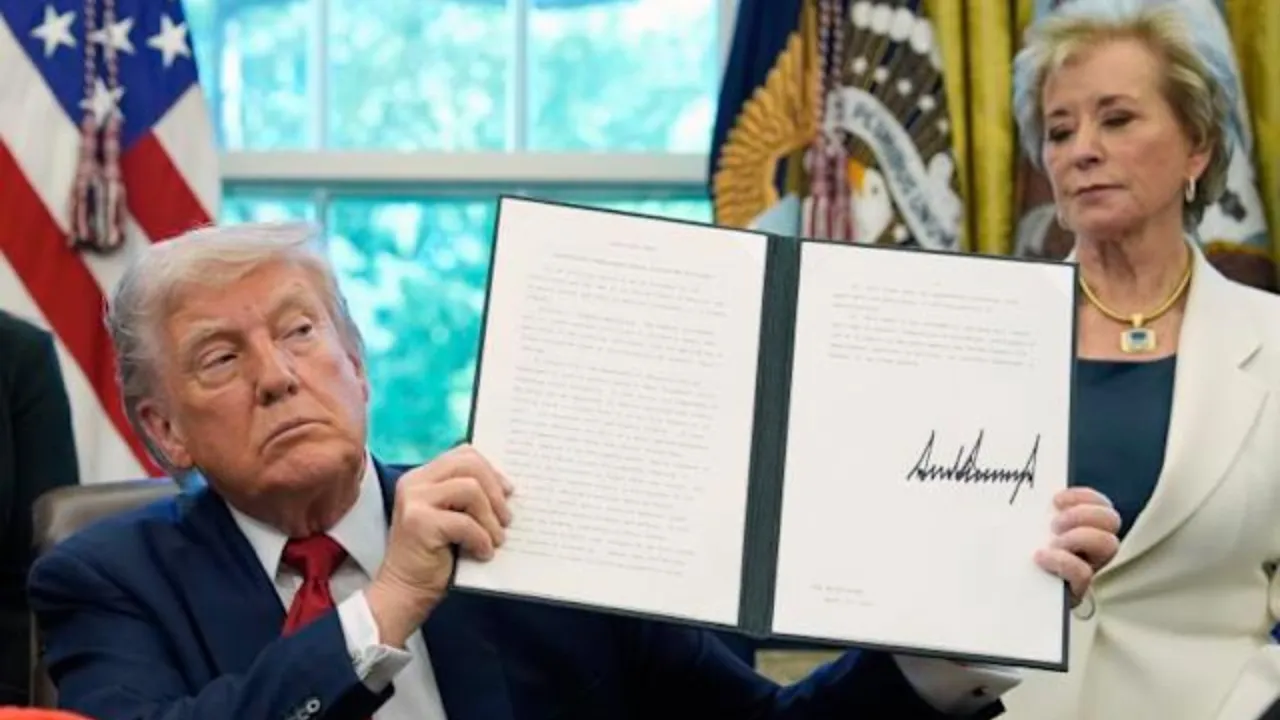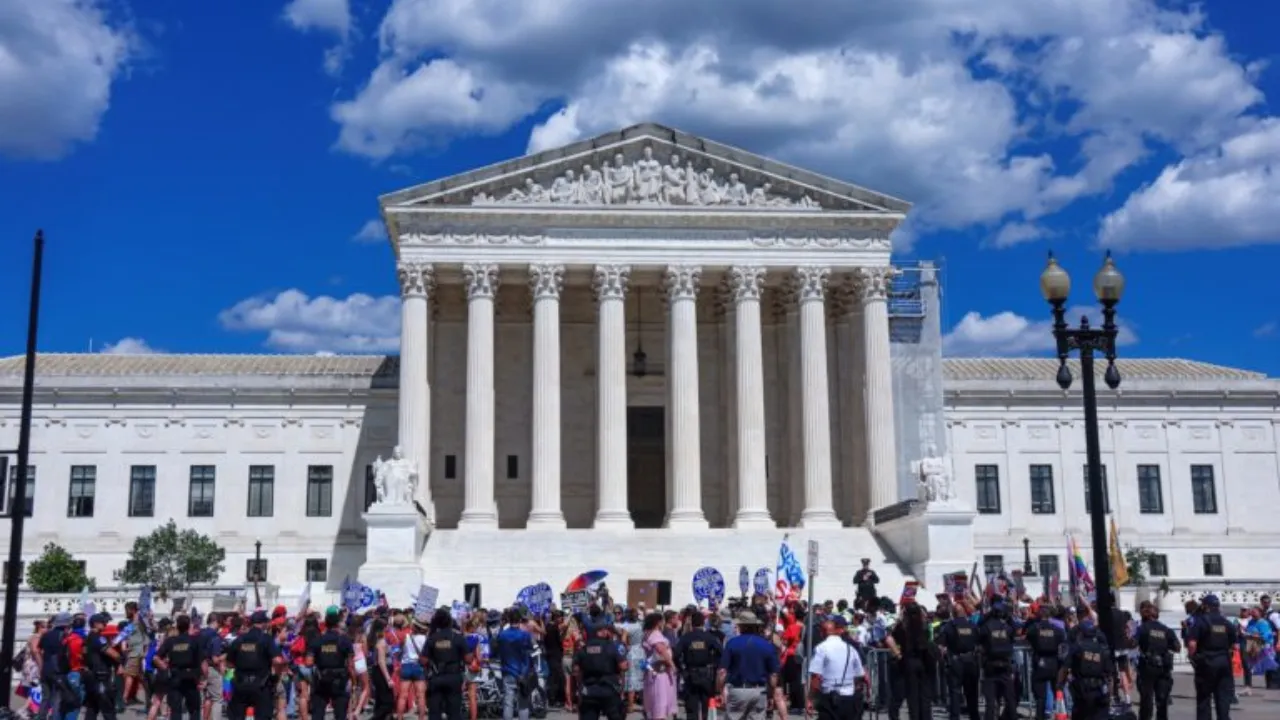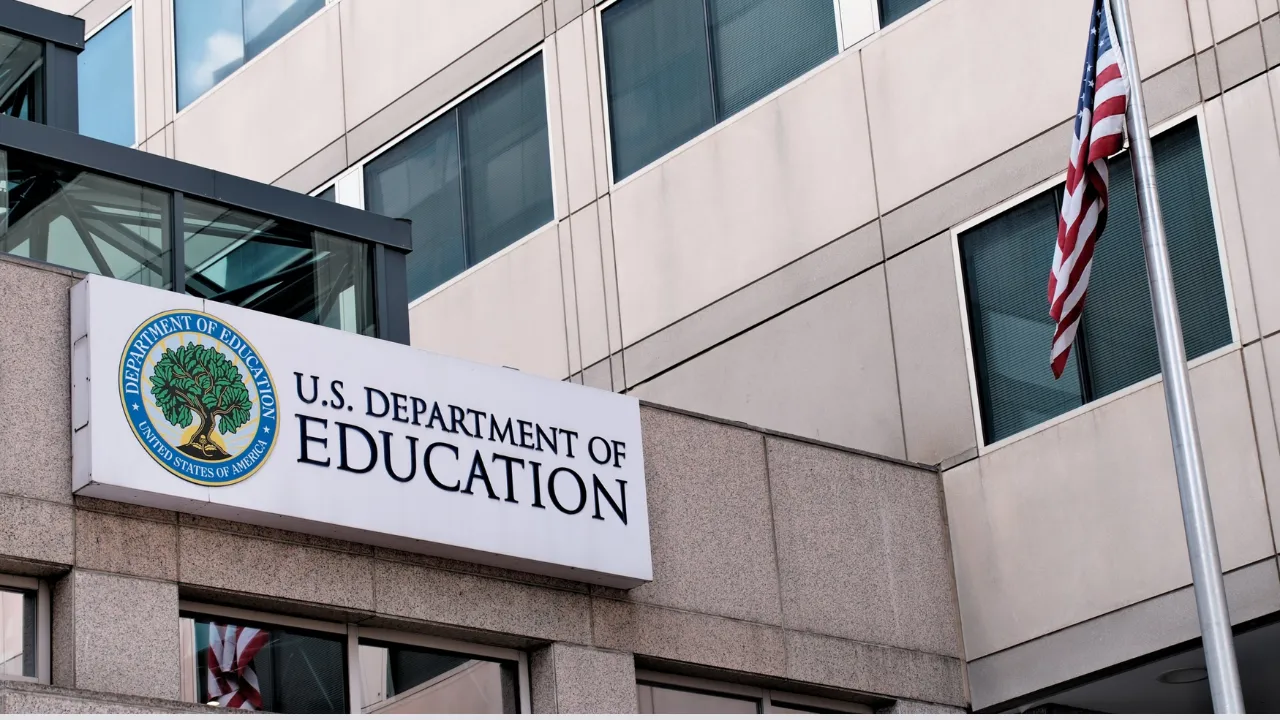Federal Education Funds Freeze 2025: The Trump administration’s recent decision to freeze $6.8 billion in federal education funds has sent shockwaves through school districts nationwide. The cuts, which impact funding already allocated by Congress for the 2025 fiscal year, affect a range of essential programs including support for English learners, migrant students, teacher training, after-school services, and technology upgrades. The announcement—delivered with minimal explanation—came just as districts were preparing to begin their academic year budgets.
In California, which faces a direct hit of at least $811 million, the consequences are already beginning to surface. School officials are scrambling to reassess planned programs and staffing, with some fearing long-term setbacks in educational equity and student outcomes.
Federal Education Funds Freeze 2025
The Federal Education Funds Freeze 2025 refers to the Trump administration’s halt on the distribution of several major grant programs: Title I-C, II-A, III-A, IV-A, and IV-B. These grants are typically vital for states’ ability to serve disadvantaged populations, improve classroom instruction, and close opportunity gaps. The freeze was announced without prior consultation or detailed justification, igniting legal and political challenges. At the heart of the controversy is whether the executive branch can lawfully withhold funds already appropriated by Congress and tied to the current school fiscal year, which began July 1. As schools brace for disruption, advocates are calling the freeze both unprecedented and unlawful.
Overview Table
| Key Detail | Information |
| Total Amount Frozen | $6.8 billion |
| California Impact | $811 million |
| Programs Affected | Title I-C, II-A, III-A, IV-A, IV-B |
| Types of Support Lost | English learner programs, migrant student support, teacher training, after-school programs, classroom technology |
| Federal Justification | “Alignment with administration priorities” |
| State Reaction | Legal challenges expected; widespread criticism from school officials |
| Notice Format | 84-word email from Department of Education |
| Implementation Start | July 1, 2025, when school budgets went into effect |
What Programs Are Being Held Up?
The withheld funds are tied to cornerstone federal education programs:
- Title III-A: Funds instructional support for students learning English. These programs assist with language development and educational integration.
- Title I-C: Provides resources to students from migrant families, offering stability in education despite frequent moves.
- Title II-A: Supports teacher training, recruitment, and classroom leadership development.
- Title IV-A and IV-B: Fund after-school programs, mental health services, arts and music education, and modern classroom technology.
The programs collectively support millions of students and are particularly crucial for districts with high populations of English learners or economically disadvantaged students.
Immediate Impact on California
In California, where approximately 1.1 million students are classified as English learners and many more rely on federally funded programs, the funding freeze has thrown budgets and staffing into disarray. Districts had already planned their school year with the assumption that these funds—approved by Congress—would arrive on time.
State Superintendent Tony Thurmond called the freeze “illegal” and warned that the impact would be immediate. Teachers hired under Title II-A, after-school staff paid under Title IV-B, and programs built around Title III-A all face uncertainty. Despite these funds comprising less than 1% of California’s education budget, their loss disrupts efforts aimed at narrowing achievement gaps.
Federal Justification for the Freeze
The Trump administration has defended the freeze as part of a policy reassessment. The Department of Education stated the move aligns with “the President’s priorities” and emphasized its intent to ensure taxpayer money is spent in accordance with new goals.
The administration’s proposed 2026 budget calls for cutting programs like English language acquisition, arguing they promote bilingualism over “English primacy.” Critics, including state officials and education groups, counter that these programs are not divisive but foundational to ensuring equal educational access.
The executive branch’s authority to pause or cancel already-allocated funds is now a matter of legal debate. Under the Impoundment Control Act, the president must secure Congressional approval to withhold funding after appropriations are made. Without this, the freeze could be deemed unconstitutional.
Reaction from States and Education Advocates
Leaders across political lines have condemned the decision. In California, Superintendent Thurmond has promised to fight back, while advocacy groups like Californians Together stress that English learners already face significant hurdles. These funds, they argue, are not optional luxuries—they’re essential lifelines.
Advocates also challenge the federal rationale that mobility-oriented programs “encourage instability.” For many migrant families, educational programs tailored to their circumstances help provide consistency and reduce learning disruptions, not exacerbate them.
Legal experts suggest a court challenge is likely. Lawsuits may argue that the administration overstepped its authority and that freezing active-year funds violates Congressional intent.
Legal and Legislative Path Forward
Congress may intervene by enforcing budgetary rules and pressing the administration to release the funds. Lawmakers from both parties have raised concerns, particularly from districts where migrant or English learner populations are high.
Meanwhile, legal scholars suggest the matter may ultimately land in court. A federal judge could force the Department of Education to follow statutory guidelines, especially if it’s proven that school systems made budget decisions in reliance on those appropriations.
Until then, school districts are advised to track developments closely and consider contingency plans, particularly those with programs heavily funded through the affected grants.
FAQs
1. What does the funding freeze include?
It affects grants for English learners, migrant students, teacher development, after-school programs, and classroom tech improvements under Titles I-C, II-A, III-A, IV-A, and IV-B.
2. When did the freeze take effect?
As of July 1, 2025, the Department of Education has paused disbursement of grants for the current academic year.
3. Why is California hit especially hard?
With a large English learner population and significant migrant student numbers, California was allocated over $800 million in support, all now withheld.
4. Is the freeze legal?
Federal law suggests Congress must approve such impoundments. Legal experts and state officials argue the action may violate the Impoundment Control Act.
5. What can schools do now?
Districts should prepare contingency plans, follow updates via the Department of Education, and collaborate with state officials pushing for legal remedies.
Final Thought
The Federal Education Funds Freeze 2025 stands to disrupt the lives of millions of students, especially those in underserved communities. It threatens to derail progress made in closing achievement gaps, training quality educators, and equipping classrooms with essential tools.
This unprecedented move must be viewed not just as a policy decision, but as a challenge to the integrity of public education and the balance of power between the executive and legislative branches. Schools, communities, and states must stand together to demand transparency, legal compliance, and the restoration of critical resources.
Call to Action:
If you’re a teacher, school leader, parent, or advocate, now is the time to speak out. Contact your representatives. Attend local education board meetings. Share verified information within your networks. The strength of our public schools depends on ensuring every dollar allocated for students reaches them without delay or obstruction.















